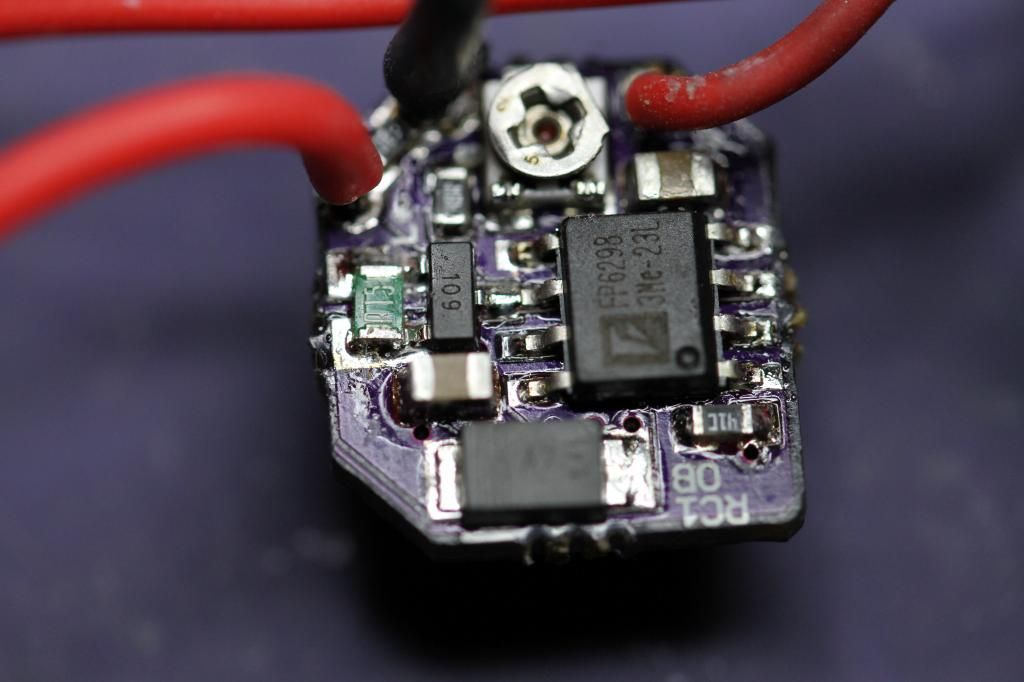So, I have good news and ... confusing (?) news.
The good news:
I really wanted to find a problem with the driver's assembly. I looked really closely, tested the resistor values, tested the cap values as best I could, and did some conductivity tests to make sure everything that was supposed to be connected was, and everything that wasn't, wasn't. After all of that, I didn't find anything wrong with your assembly. In fact, I think it was a pretty good assembly job!
The confusing news:
When I tested the driver's operation, I couldn't find anything wrong with that either:
Video - TinyPic - Free Image Hosting, Photo Sharing & Video Hosting
It output 2.26 Amps on boot, and was finger comfortable (ie didn't get uncomfortably hot until) about the 40 second mark. At that point, 40 seconds in, the current had dropped from 2.26 Amps to 2.1 Amps. In terms of 2.26 Amps, that's just the best I could do with the precision of the pot. Half a degree in either direction might have gotten us to 2.3 Amps, or whatever your target was, I don't know. I'll note that I adjusted the pot with the driver OFF, by simply measuring the resistance, and trying to get it as low as possible. I found that to be a whole lot easier than trying to adjust the pot while the driver was running (I hate pots).
So what's the issue here? I believe my comment in the very first post in this thread was that the driver "
actually runs fine for a bit without any heatsinking". That seems pretty bang on to me, no?






